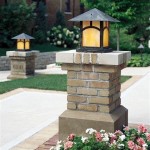How to Finish Outdoor Wood
Outdoor wood is exposed to a variety of harsh conditions, including sun, rain, snow, and temperature extremes. This exposure can cause the wood to rot, decay, and become discolored. To protect your outdoor wood and extend its lifespan, it is essential to apply a finish. Outdoor wood finishes provide a barrier against these elements, enhancing the wood's durability, beauty, and longevity. Choosing the right finish and applying it properly are critical factors in ensuring the success of your project.
Choosing the Right Finish
The type of finish you choose will depend on the type of wood, the intended use, and your desired aesthetic. Here are some popular options:
- Oil-based stains: These stains penetrate the wood's pores, adding color and protection. They provide a natural look and are available in a wide range of colors.
- Water-based stains: Stains that are water-based have low VOCs and dry quickly. They are also easy to clean up with soap and water but offer less protection than oil-based stains.
- Solid-color stains: Solid color stains create an opaque finish that hides the wood's natural grain. They are ideal for projects where you want a specific color.
- Varnishes: Varnishes provide a clear, protective coating that enhances the wood's natural beauty. They are available in gloss, semi-gloss, satin, and matte finishes.
- Polyurethane: Polyurethane is a durable, water-resistant coating that provides excellent protection. It is available in a variety of finishes, including oil-based, water-based, and catalyzed.
- Penetrating sealers: These sealers create a barrier that prevents moisture from penetrating the wood. They are ideal for use on decks and other outdoor surfaces where water damage is a concern.
Before applying any finish, it is important to clean and prepare the wood surface. This includes removing dirt, grime, mildew, and old finishes. You may need to use a cleaning solution, a sanding block, or a power sander.
Applying the Finish
Once the wood surface is prepared, you can apply the finish. The specific techniques for applying each type of finish will vary. Here are some general tips:
- Apply the finish in thin, even coats. Too much finish can trap moisture and cause the wood to crack.
- Allow each coat to dry completely before applying the next. Drying times will vary depending on the type of finish, temperature, and humidity.
- Use a brush, roller, or sprayer. Choose the application method that is best suited for the project and your skill level.
- Follow the manufacturer's instructions carefully. The instructions will provide specific information on application, drying time, and maintenance.
Maintaining the Finish
Outdoor wood finishes require regular maintenance to keep them looking their best and protecting the wood. Here are some tips for maintaining your outdoor wood:
- Clean the wood surface regularly. Use a mild soap and water solution to remove dirt, grime, and mildew. Avoid using harsh chemicals that can damage the finish.
- Inspect for damage and repair promptly. Cracks, chips, and scratches in the finish can allow moisture to penetrate the wood and cause rot.
- Reapply the finish as needed. The frequency of reapplication will depend on the type of finish, the amount of exposure, and the weather conditions.
By following these tips, you can help to ensure that your outdoor wood stays beautiful and protected for years to come.

What S The Best Outdoor Finish Wood

How To Build Finish An Outdoor Table Top Best Exterior Wood

6 Ways To Treat Wood For Outdoor Use Pine And Poplar

How To Finish And Protect Outdoor Furniture

How To Treat Wood For Outdoor Use 3 Methods Explained

How To Choose A Finish For An Outdoor Project Woodworking Blog S Plans

The Best Finishes For Outdoor Wooden Furniture

Clear Outdoor Wood Finishes That Work

3 Ways To Finish Pine For Outdoor Use Wikihow

Learn Woodworking Tips With Rockler
Related Posts







